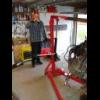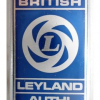Hi and i hope everyone is keeping well in these strange times.
My question is on sills and their vents and the use of them. I know it is said that they are for primarily to drain the condensation that arises in the car from the open structure of the car and most places draining into them. Today while removing the remnants of the old sill i notice that the worst of the corrosion on the inner sill is directly where the vent hole is/was and it is relatively good where it meets the floor. Does the vent hole let more water into the sill if the car is used on a wet day than the condensation effect on the sill. It seems to me that if an outlet is created for water then that outlet becomes an inlet for water when the car is or was used in wet weather and the water does the damage anyway. If a sill without the conventional vents is used and put smaller outlets facing the rear to avoid the spray from the wheels
or use a sill without the vents what is the likely outcome if they were done that way? What do people think? Or will they rust in spite of whatever is done. Hard to know what to do for the best.
John

















